
When Lewis and Clark returned east from their Voyage of Discovery in 1806, they melded the disparate regions of North America into one in the collective Jeffersonian consciousness. But the world the explorers described to the American people was one that had already undergone momentous change. As their own journals indicated, Variola s transit of the continent had preceded them by a full generation. In the years of the American Revolution, long before the two explorers forged a unified continent in the American psyche, converging military, political, social, environmental, and economic upheavals had unwittingly united North Americans far and wide in a common, if horrific, experience. That experience was epidemic smallpox, passed from one human being to another in a chain of connections as terrible as it was stunning. Yet connections are only what gave birth to the pestilence. They do not explain what followed. The great epidemic was a tremendous upheaval in its own right, and just as it arose out of the turmoil that preceded it, so it created repercussions of its own.
The consequences of the pox were as diverse as the places and peoples it afflicted. On the eastern seaboard of the continent,where the initial outbreaks occurred, the lessons taken from early episodes, particularly the Canadian calamity of 177576, prompted George Washington and his medical staff to address the all-important issue of smallpox control in the Continental army. Had they not done so, it is likely that the Quebec debacle would have repeated itself, possibly many times, in later campaigns. Immunization liberated Washingtons army from almost certain infection, especially given the broad circulation of people and microbes that went with the war. The army inoculations of 177778 represent the first large-scale, state-sponsored immunization campaign in American history. Afterward, in the brief period between the end of the war and Edward Jenners development of cowpox vaccination in 1796, variolation gained wider acceptance than it had had previously, as local governments throughout the United States eased long-standing restrictions on the practice.
Inoculation liberated the Continental troops from fear of contagion, but Variola still dashed the hopes of many African Americans who sought a more momentous sort of freedom than that envisioned by the American patriots. For the Ethiopian Regiment and for the thousands of black loyalists who joined the British during the southern campaign of the war, smallpox was the deadliest of enemies. Despite the slaves exclusion from the limited notions of liberty that inspired the Revolution, their experience with smallpox showed how very American they had become. Born and raised on New World soil, they shared a common vulnerability to smallpox with their country-born neighborsunlike Europeans, who usually encountered Variola and acquired immunity in childhood.
For the Indian groups whose lands bordered the western fringes of Anglo-American settlement, the pestilence compounded a catastrophic pattern of population decline that had begun centuries earlier. The Creeks, Cherokees, and Iroquois had endured repeated bouts of Old World disease by the time of the Revolutionary War, and the smallpox then ensured that demographic recovery would not come soon. As land-hungry Anglo-Americanslooked westward after the Treaty of Paris, many of these Indians reeled from the triple disaster of smallpox, war, and abandonment by their British allies. You are a subdued people, American treaty commissioners told the one group of Indians in 1784. We are at peace with all but you; you now stand out alone against our whole force. The force was overwhelming, and the years that followed were marked by Indian resistance, defeat, and removal to lands west of the Mississippi River.
Far west of the Mississippi, in the mountains and deserts of northern New Spain, the demographic impact of the smallpox epidemic was so severe that even in the Hispanic population, the mean age of marriage dropped visibly over the next decade, a phenomenon that one scholar has labeled a reproductive strategy for recovering lost numbers. Confronted with severe losses among the Christian Indians of New Mexico, Governor Juan Bautista de Anza ordered a contraction of the provinces mission system. The move was approved by Viceroy Teodoro de Croix, but it raised the ire of local Franciscans, locked in an unending battle with governmental authority. At the same time, the pox itself may have pushed traditionalist Pueblos to conversion: As their time-honored healing practices failed and desperation set in, they apparently sought a cure for smallpox in baptism. By correlating baptism and burial records, scholars in the future may well be able to appraise the statistical significance of these deathbed conversions.
In the colonial settlements of Texas and New Mexico, fierce Comanche raids had marked the years before the great smallpox outbreak . But in the mid-1780s, after nearly three-quarters of a century of relentless hostilities with the Spaniards, these warlike people of the plains made peace on both flanks: They concluded treaties with Texas Governor Domingo Cabello in October 1785 and with New Mexico Governor Anza in April 1787. What brought about this shift in affairs? The impulse toward peace inevitably stemmed from a convergence of needs and events: Anzas defeat of Cuerno Verde in 1779 was a devastating blow to the Indians.Moreover, a Spanish-Comanche alliance against the Apaches held obvious appeal for both parties. But from the Comanches perspective, it may well have been losses from smallpox that made such an alliance appealing or necessary.
The epidemics impact was likewise dramatic farther north. On the upper Missouri River, horrific mortality among the agricultural Mandans, Hidatsas, and Arikaras left these tribes ill equipped to fend off the Sioux marauders who threatened them from the east. Reeling from their losses, the sedentary tribes sought safety in numbers, combining villages and moving when necessary. The trader-explorer Jean-Baptiste Truteau visited the Arikaras in June 1795, in central South Dakota near the junction of the Cheyenne and Missouri rivers. The Indians had been almost entirely destroyed by the smallpox, he wrote, which broke out among them at three different times. The few survivors had merged the remains of thirty-two villages into only two. Moreover, in the quest for security, some Arikaras chose to depart entirely, taking refuge among other tribes. Two chiefs seceded last spring with their bands, Truteau wrote. One is gone to make his residence with the Pani-Mahas [Omahas], the other with the Mandans.
The Mandans and Hidatsas engaged in a similar consolidation even as they welcomed the Arikaras as neighbors. Meriwether Lewis and William Clark stayed among the Mandans at the Knife Rivers confluence with the Missouri in 180405. The Mandans, according to the explorers, were comparative newcomers to the neighborhood, having migrated north from the Heart River to join forces with their Hidatsa friends. Maney years ago they lived in Several Villages on the Missourie low down, wrote Clark, but the Smallpox destroyed the greater part of the nation and reduced them to one large Village and Some Small ones. When the adventurers revisited the Indians on their return trip, Clark reiterated the point: Small pox killed the greater part of them and made them So weak that all that were left only made two Small villages when Collected.
On the maps they drew of their travels, Lewis and Clark notedthe locations of ruined Mandan towns that pointed to the ultimate triumph of the Sioux in the aftermath of the epidemic. At the Heart River, they noted many such sites, including one Old Mandan Village destroyed by the Sioux and Small Pox and another that they marked with the legend killed by the Soux. Until Variola struck, the contest between the Sioux and the Mandans had stood at a draw. But the plague took a greater toll on densely populated towns than it did on nomadic bands, and afterward, the balance tipped in favor of the Sioux raiders. Life for the Mandans had changed forever: All nations before this maladey [smallpox] was affrd. [afraid] of them, wrote Clark in 1804, but after they were reduced the Sioux and other Indians waged war, and killed a great maney. By this time, according to the historian Richard White, the Sioux dominated the upper Missouri nearly to the Yellowstone River. In 1837, another virulent wave of smallpox struck the Mandans, leaving only a handful of survivors and ending their existence as an autonomous nation. The Sioux soon became undisputed lords of the plains.

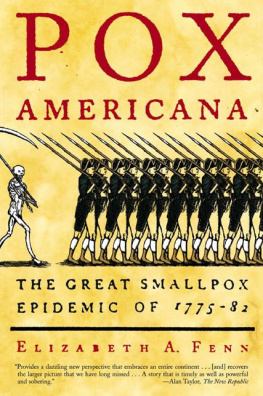
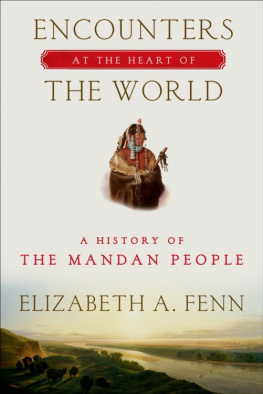
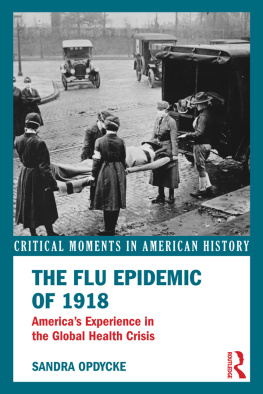

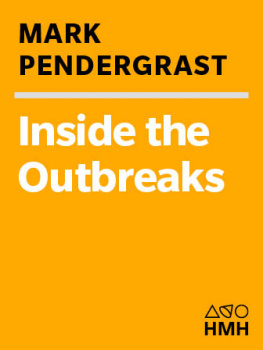

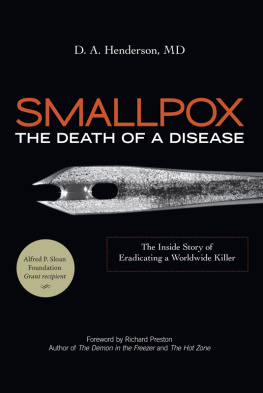
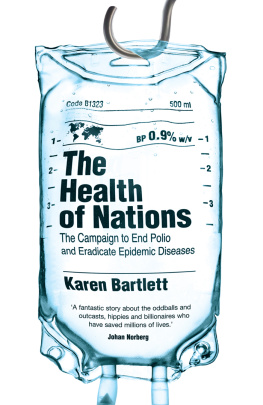
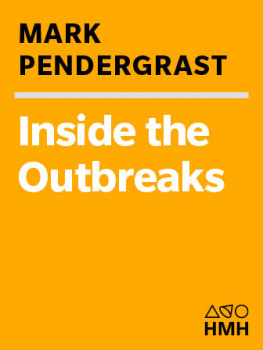
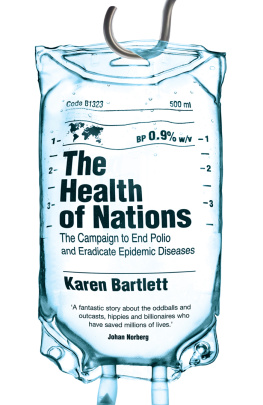


 When Lewis and Clark returned east from their Voyage of Discovery in 1806, they melded the disparate regions of North America into one in the collective Jeffersonian consciousness. But the world the explorers described to the American people was one that had already undergone momentous change. As their own journals indicated, Variola s transit of the continent had preceded them by a full generation. In the years of the American Revolution, long before the two explorers forged a unified continent in the American psyche, converging military, political, social, environmental, and economic upheavals had unwittingly united North Americans far and wide in a common, if horrific, experience. That experience was epidemic smallpox, passed from one human being to another in a chain of connections as terrible as it was stunning. Yet connections are only what gave birth to the pestilence. They do not explain what followed. The great epidemic was a tremendous upheaval in its own right, and just as it arose out of the turmoil that preceded it, so it created repercussions of its own.
When Lewis and Clark returned east from their Voyage of Discovery in 1806, they melded the disparate regions of North America into one in the collective Jeffersonian consciousness. But the world the explorers described to the American people was one that had already undergone momentous change. As their own journals indicated, Variola s transit of the continent had preceded them by a full generation. In the years of the American Revolution, long before the two explorers forged a unified continent in the American psyche, converging military, political, social, environmental, and economic upheavals had unwittingly united North Americans far and wide in a common, if horrific, experience. That experience was epidemic smallpox, passed from one human being to another in a chain of connections as terrible as it was stunning. Yet connections are only what gave birth to the pestilence. They do not explain what followed. The great epidemic was a tremendous upheaval in its own right, and just as it arose out of the turmoil that preceded it, so it created repercussions of its own.